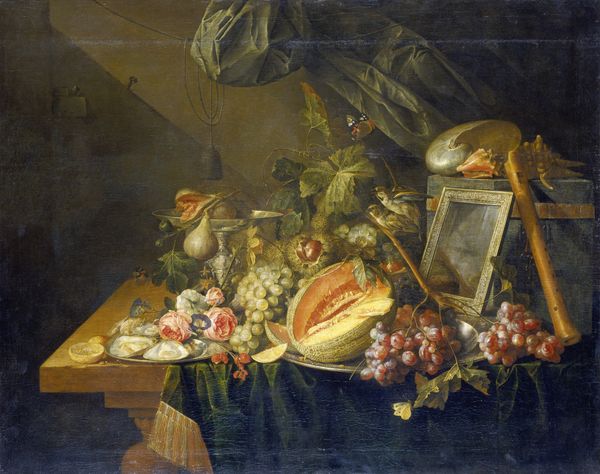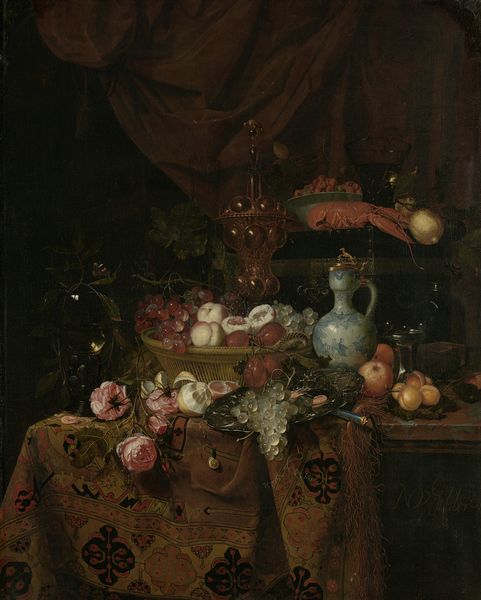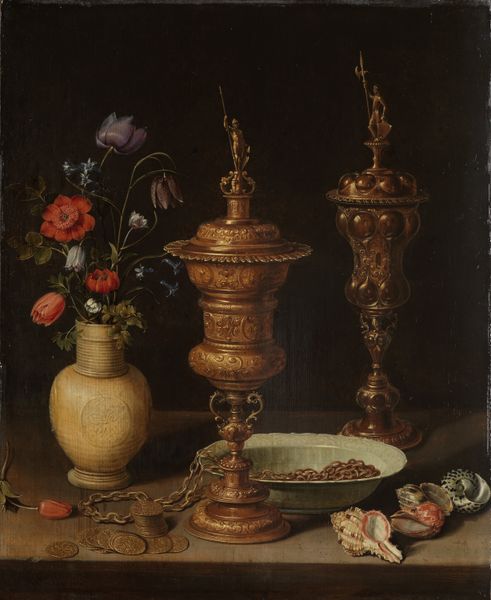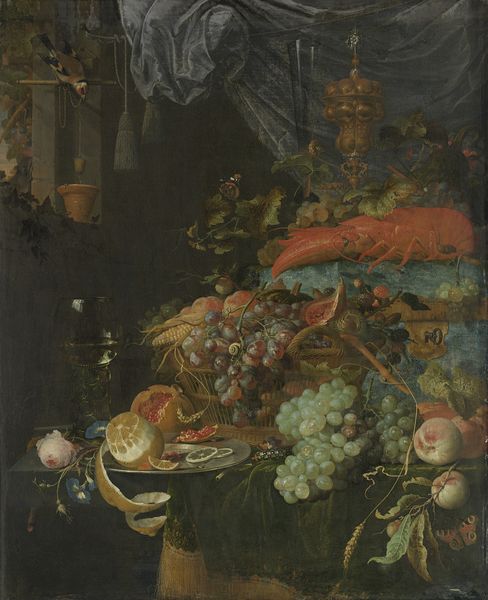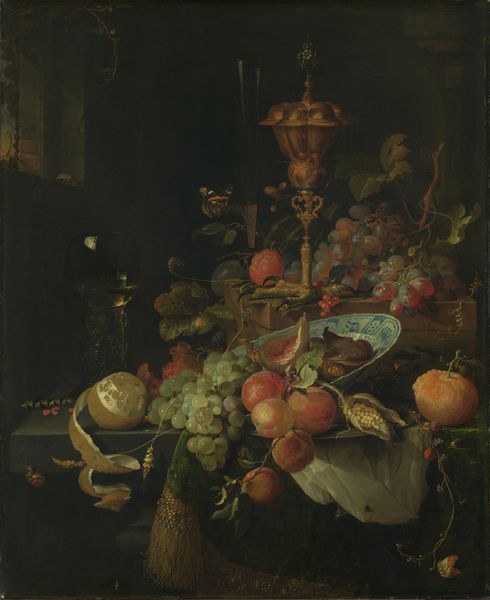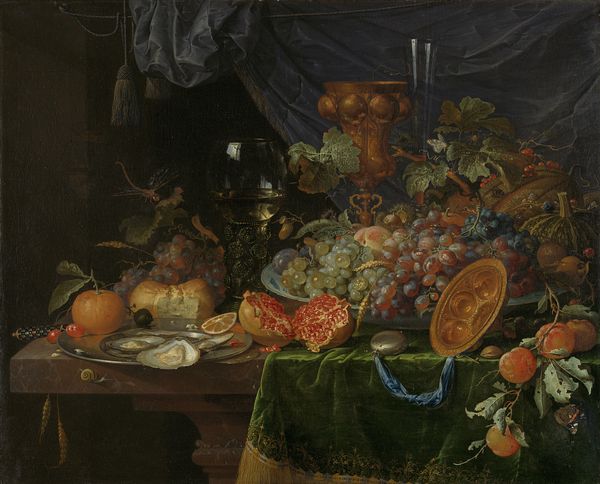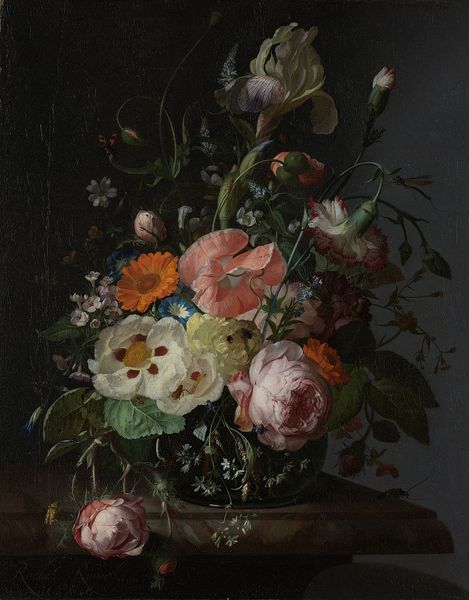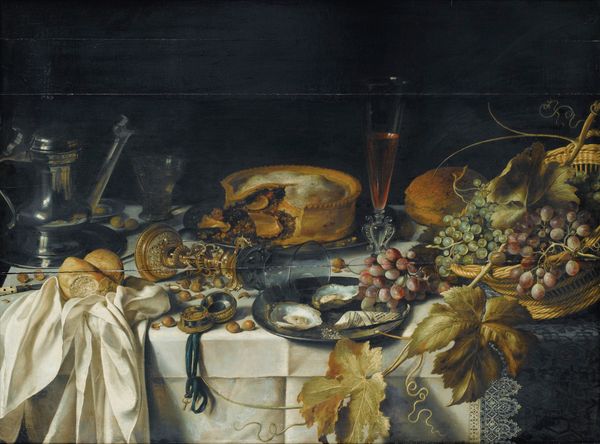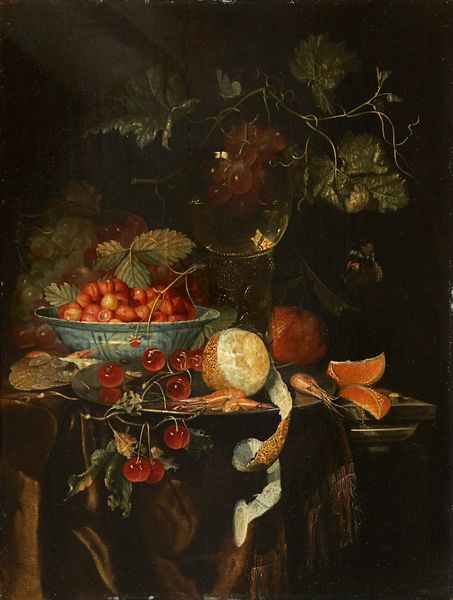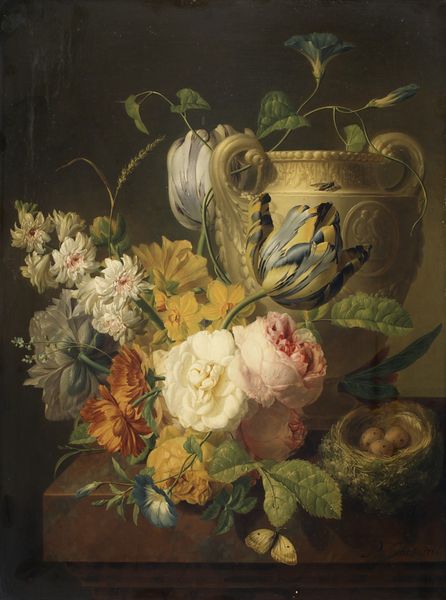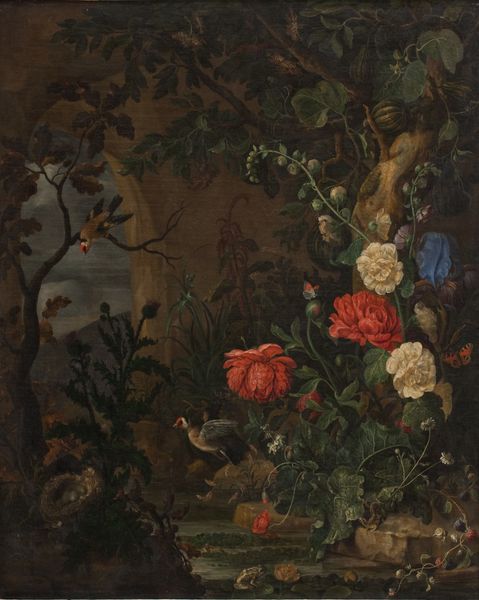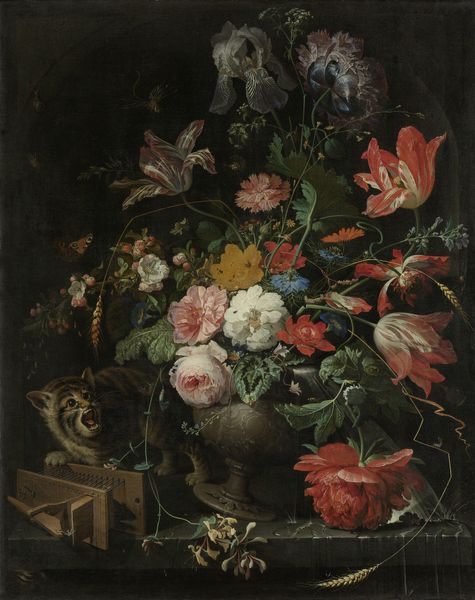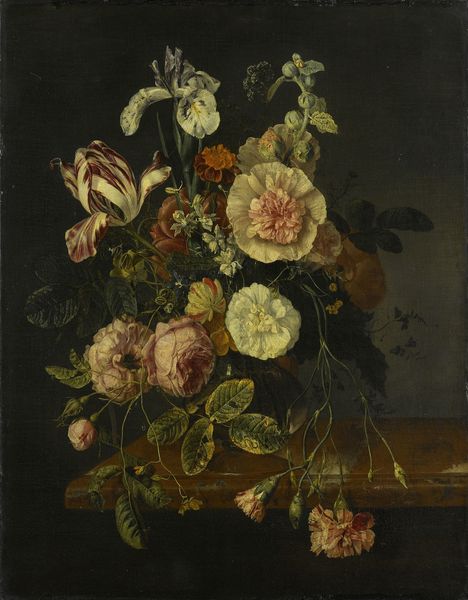
painting, oil-paint
#
baroque
#
painting
#
oil-paint
#
genre-painting
#
realism
Dimensions: 71 cm (height) x 97 cm (width) (Netto)
Pieter Nason, a Dutch painter active in the 17th century, created this still life. During this period, the Dutch Republic experienced a surge in wealth and global trade, impacting artistic production. In the painting, the items displayed are grapes, peaches, roses, and an ornate metal pitcher. Reflect on how they are carefully arranged on what seems to be a marble table covered in a draped black cloth. In the Dutch Golden Age, such displays of luxury items were meant to convey messages about status and wealth. However, they also served as memento mori, reminders of life’s fleeting nature. Consider, for example, the cut peach, a symbol of decay and mortality. Nason’s still life gives us a window into the complex relationship between material culture, social identity, and personal reflection in the Dutch Golden Age. The image may serve as a status symbol, but it also explores the transience of earthly possessions.
Comments
No comments
Be the first to comment and join the conversation on the ultimate creative platform.
